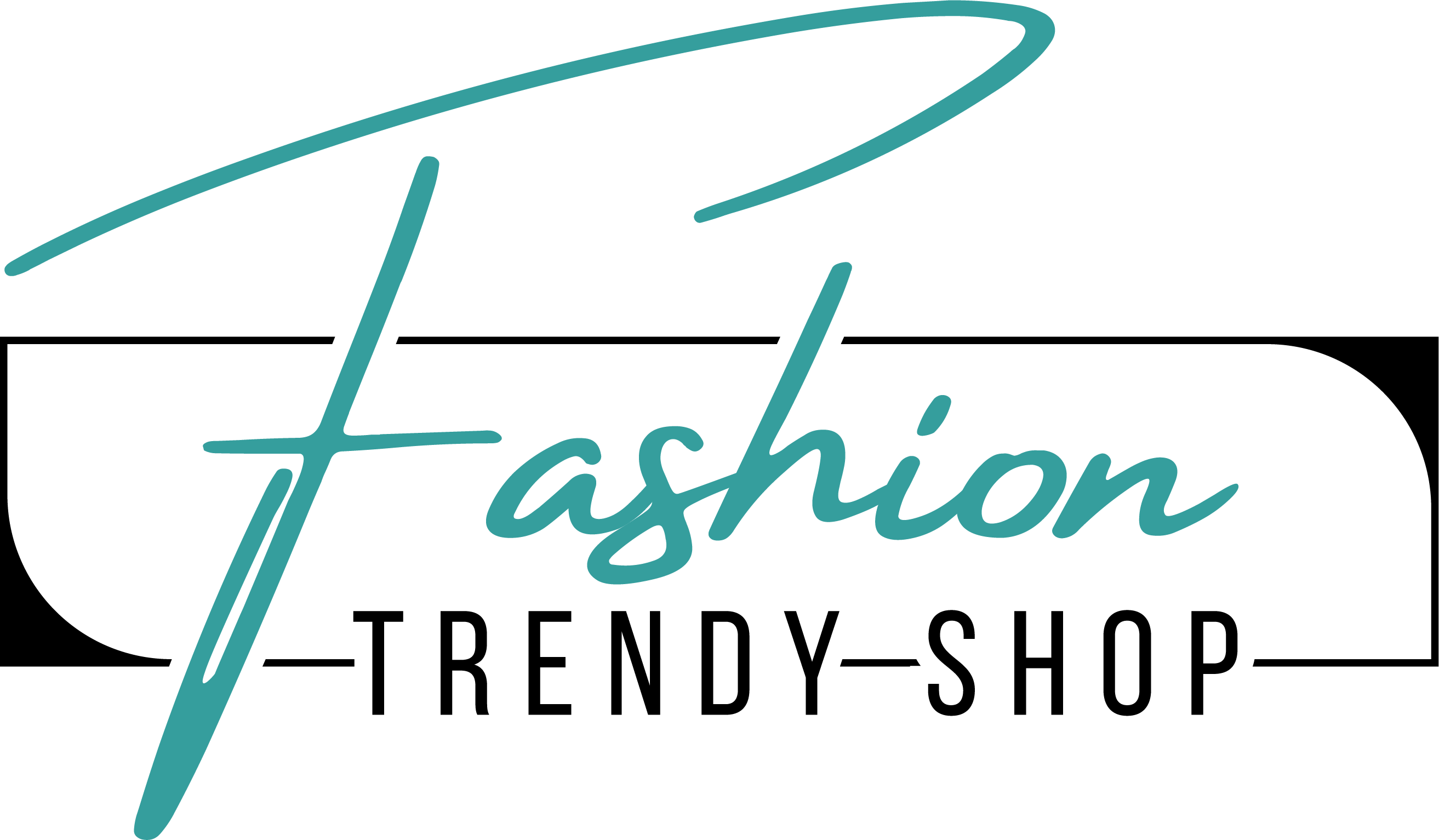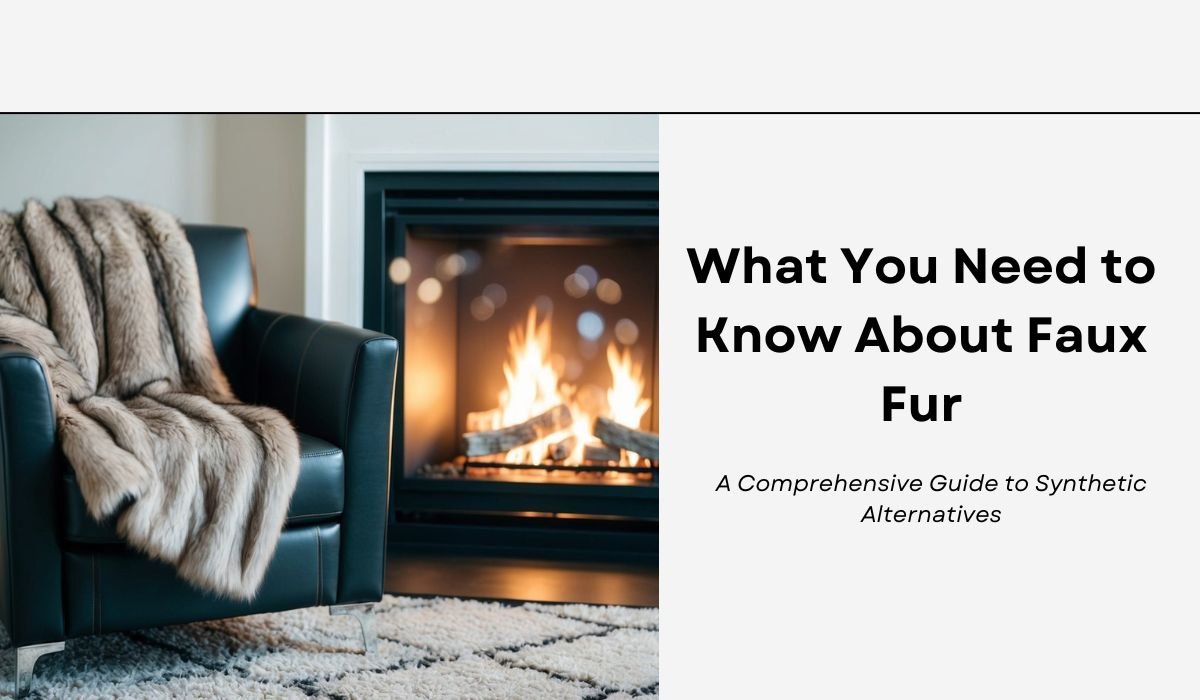From Cozy Comfort to Ethical Fashion: Understanding Modern Alternatives to Traditional Fur
Faux fur has become a popular alternative to real animal fur in the fashion world. It offers a cruelty-free option for those who love the look and feel of fur without harming animals. Faux fur is made from synthetic fibers that mimic the appearance and texture of real fur, providing a sustainable and ethical choice for fashion-conscious consumers.
The history of faux fur dates back to the early 1900s, but it has come a long way since then. Modern manufacturing techniques have greatly improved the quality and realism of faux fur fabrics. Today, many top designers and brands use faux fur in their collections, showcasing its versatility and appeal.
Faux fur comes in many styles and textures, from soft and plush teddy bear-like fabrics to more realistic animal fur imitations. It can be used in clothing, accessories, and home decor items. While faux fur offers many benefits, it’s important to consider factors like care and maintenance when choosing faux fur products.
Table of Contents
Key Takeaways
- Faux fur is a synthetic alternative that mimics real fur without harming animals
- Modern faux fur has improved in quality and is used by many top fashion brands
- Faux fur comes in various styles and requires proper care for longevity
Understanding Faux Fur
Faux fur is a man-made fabric designed to look and feel like animal fur. It’s made from synthetic materials and has evolved over the years to become more realistic and versatile.
Materials Used in Faux Fur
Faux fur is typically made from synthetic fibers like acrylic, polyester, or modacrylic. These materials are woven or knitted to create a soft, fuzzy texture that mimics real animal fur.
Some common types of faux fur fabrics include:
- Pile fabrics
- Fleece
- Sherpa
- Teddy bear fur
The backing is often made of polyester or cotton. Manufacturers can adjust the length, thickness, and color of the fibers to create different looks and textures.
History and Evolution
Faux fur has been around for over a century. It first appeared in the early 1900s as a cheaper alternative to real fur. Early versions weren’t very realistic.
The 1950s saw big improvements in synthetic fabrics. This made faux fur look and feel more like the real thing. By the 1970s, animal rights groups pushed for cruelty-free options. This led to more demand for faux fur.
In recent years, designers have embraced faux fur. They’ve created unique styles that don’t try to copy real fur. The teddy bear coat trend is a good example of this new approach.
Comparison With Real Fur
Faux fur and real fur have some key differences:
- Cost: Faux fur is usually much cheaper than real fur.
- Care: Real fur needs special storage and cleaning. Faux fur is easier to care for.
- Durability: Real fur can last for decades with proper care. Faux fur may wear out faster.
- Warmth: Real fur is very warm. Faux fur can be warm too, but may not insulate as well.
- Ethics: Faux fur is animal-friendly. Real fur raises ethical concerns for some people.
- Environmental impact: Both have drawbacks. Real fur uses animal resources. Faux fur is often made from non-biodegradable synthetics.
The choice between real and faux fur depends on personal values, budget, and needs.
Production Process
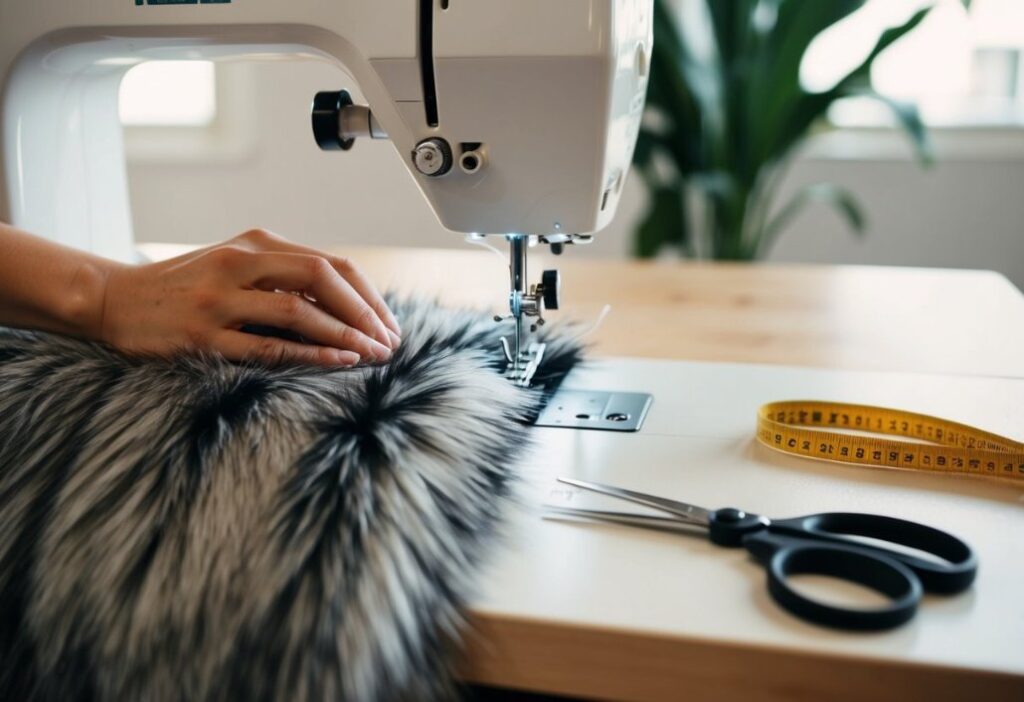
Faux fur manufacturing involves several key steps and has environmental impacts to consider. Modern production methods aim to create realistic synthetic alternatives to animal fur.
Key Manufacturing Steps
Faux fur production starts with synthetic fiber creation. Polyester, acrylic, or modacrylic fibers are made through chemical processes. These fibers are then blended to achieve the desired texture and appearance.
Next, the fibers are dyed to match natural fur colors and patterns. The dyed fibers are attached to a backing fabric, often through knitting or weaving. This creates the fur-like pile surface.
The fabric then goes through finishing treatments. These may include:
- Brushing to fluff up the fibers
- Trimming to create an even pile height
- Applying coatings for softness or water resistance
Environmental Impact
Faux fur production has both pros and cons for the environment. On the positive side, it avoids animal welfare issues linked to real fur. It also uses less land and water than raising fur-bearing animals.
But faux fur relies on fossil fuel-based synthetic materials. The production process uses energy and can release chemicals. Many faux furs are not biodegradable.
Some companies are working on more eco-friendly options. These include:
- Recycled polyester fibers
- Bio-based synthetic materials
- Improved dyeing methods that use less water
The durability of faux fur is also a factor. Higher quality pieces last longer, reducing waste over time.
Ethical Considerations
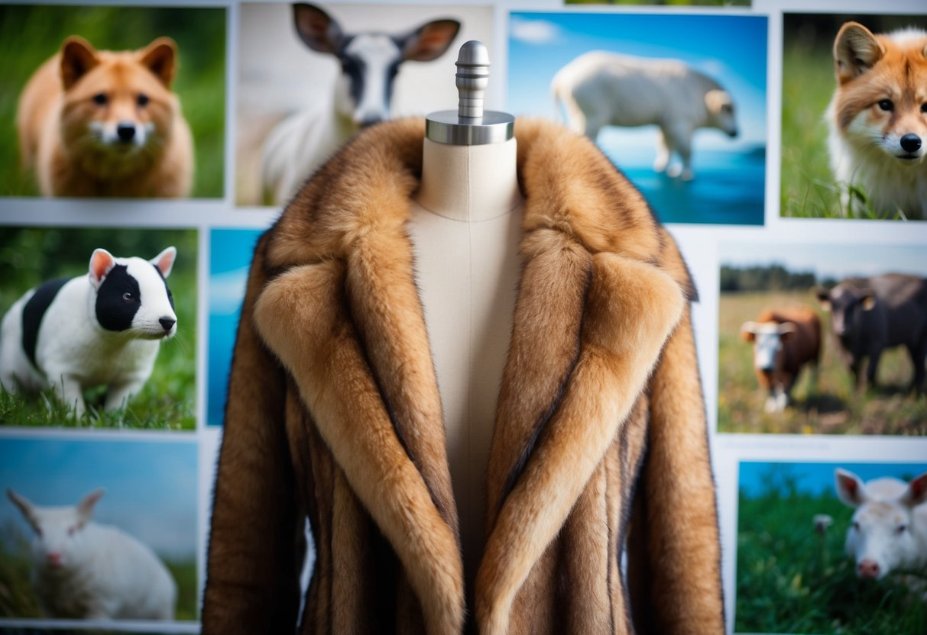
Faux fur raises important questions about animal welfare and sustainability in fashion. These issues shape consumer choices and industry practices.
Animal Welfare
Faux fur aims to protect animals from harm. Real fur production often involves cruel practices. Animals may be kept in small cages and killed inhumanely. Faux fur offers a cruelty-free option for those who like the fur look.
Some argue that fake fur normalizes real fur fashion. This could indirectly harm animals. Others say it reduces demand for real fur.
It’s important to check labels carefully. Some products labeled as faux may contain real fur. This happens due to mislabeling or mixing of materials.
Sustainable Practices
Faux fur’s environmental impact is complex. Most fake fur is made from synthetic materials like polyester. These don’t biodegrade and can shed microplastics.
Some brands are working on more eco-friendly options. They use recycled materials or plant-based fibers. These choices aim to reduce pollution and waste.
Faux fur can last a long time if cared for properly. This longevity can make it a more sustainable choice than fast fashion items.
Energy use in production is another factor. Making synthetic fur often requires less energy than raising animals for real fur.
Fashion and Trends
Faux fur has become a staple in modern fashion. It offers warmth and style without using animal products. Designers and brands are creating new looks with this versatile material.
Faux Fur in Contemporary Fashion
Faux fur coats are very popular this winter. Many fashion icons and celebrities are wearing them. Brands like The Frankie Shop and Mango offer stylish options under $300.
Designers are using faux fur in creative ways. It’s not just for coats anymore. Shoes, bags, and accessories now feature faux fur details. This adds texture and interest to outfits.
The “mob wife” look is trending. It features big, fluffy faux fur coats. This style nods to 1970s fashion. Designers like Chloé, Miu Miu, and L’Agence have embraced this trend.
Styling Tips and Tricks
Faux fur can be dressed up or down. For a casual look, pair a faux fur jacket with jeans and sneakers. For a night out, wear a long faux fur coat over a dress.
Mixing textures creates interesting outfits. Try pairing faux fur with leather, denim, or silk. This adds depth to your look.
Faux fur comes in many colors. Natural tones like brown and black are classic. Bold colors like pink or blue make a statement.
Accessories can feature faux fur too. Try a faux fur scarf, hat, or bag. These small touches add warmth and style to any outfit.
Care and Maintenance
Proper care and maintenance are key to keeping faux fur looking great. Regular cleaning and smart storage help preserve its softness and appearance. Simple steps can extend the life of faux fur items.
Cleaning and Storage
Hand washing is best for cleaning faux fur. Use cool water and mild detergent in a sink or tub. Gently agitate the item to remove dirt. Rinse well and squeeze out excess water without twisting.
Lay the faux fur flat to dry or hang it on a padded hanger. Keep it away from direct heat and sunlight. Smooth and fluff the fur as it dries to prevent matting.
For storage, use a breathable garment bag. Avoid plastic, which can trap moisture. Hang faux fur items with enough space to prevent crushing. Brush the fur before storing to remove tangles.
Extending Lifespan of Faux Fur Products
Brush faux fur regularly with a soft-bristled brush. This keeps it fluffy and prevents matting. Brush in the direction of the fur for best results.
Spot clean small stains right away. Use a damp cloth and mild soap. Blot gently, don’t rub. For bigger messes, take the item to a professional cleaner.
Avoid wearing faux fur in rain or snow. Water can mat the fibers. If it gets wet, shake off excess moisture and let it air dry. Never use heat to dry faux fur.
Store faux fur items properly between uses. Keep them in a cool, dry place. Don’t compress or crush the fur. This helps maintain its shape and texture.
Market Analysis
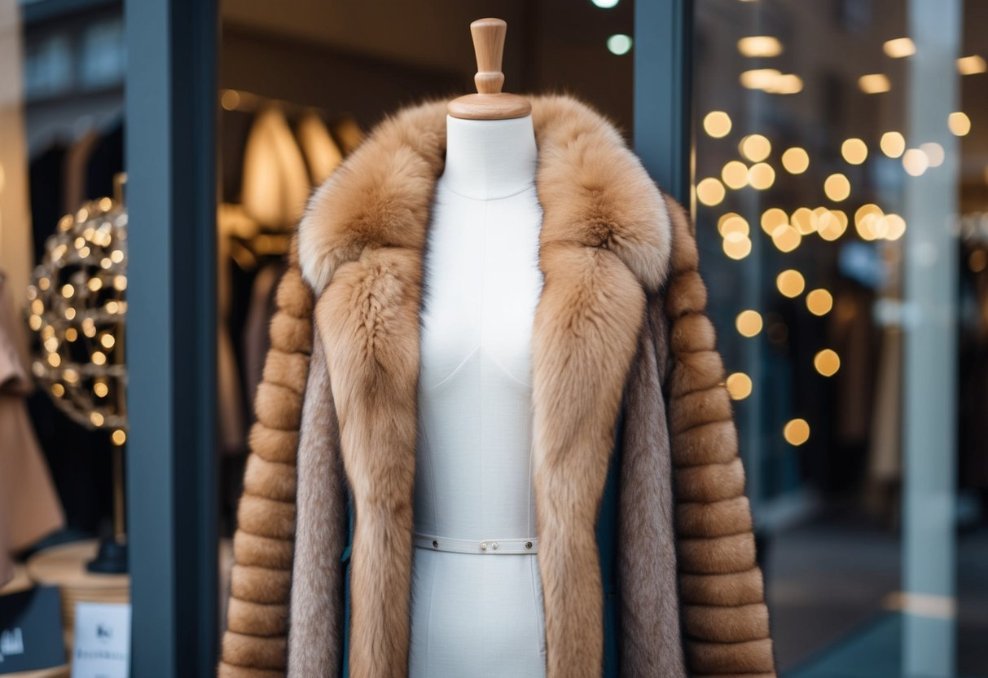
Faux fur has become a major player in the fashion industry. Its popularity stems from ethical concerns and cost-effectiveness compared to real fur.
Consumer Demand Trends
Faux fur clothing is gaining traction among shoppers. People want cruelty-free and sustainable fashion options. This has led to a boom in the faux fur market.
The global faux fur fabric market was worth $1.45 billion in 2023. Experts predict it will grow to $2.63 billion by 2032. That’s a 6.8% yearly increase.
Japan’s faux fur clothing market is set to grow 15.5% per year. It could reach $799.35 million in 2024.
India’s market is even stronger. It may hit $695.08 million in 2024 and grow 18.8% yearly after that.
Faux Fur Vs. Real Fur Markets
Faux fur offers benefits over real fur. It’s cheaper to make and buy. This makes it more accessible to a wider range of consumers.
Faux fur looks and feels similar to animal fur. It’s soft and warm, but without the high price tag of real fur.
The fur clothing sector is seen as a luxury market. Faux fur is changing this by offering a more budget-friendly option.
Manufacturers use synthetic materials like acrylics or polyester to make faux fur. This process is more eco-friendly than farming animals for their pelts.
As more people choose faux over real fur, the market for synthetic options continues to expand.
Legal and Trade Information
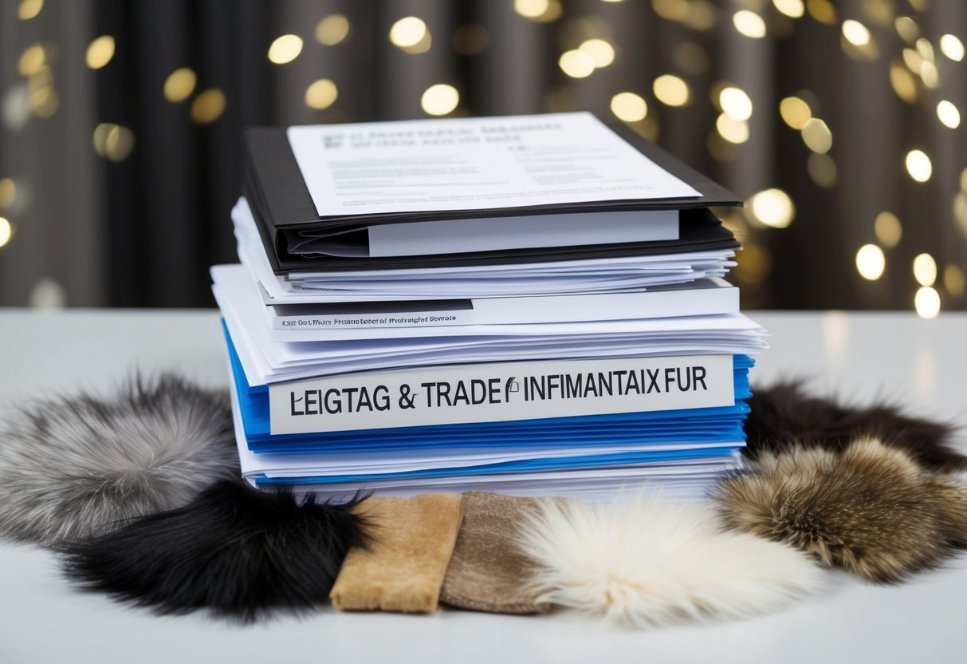
Faux fur is subject to various regulations and trade dynamics. These rules aim to protect consumers and ensure fair practices in the industry.
Regulations on Faux Fur
The Fur Products Labeling Act (FPLA) sets rules for labeling fur products. While it doesn’t cover faux fur directly, it affects how real and fake fur are marketed.
Manufacturers and sellers must label fur items with specific details. This includes the animal’s name and country of origin. The goal is to help buyers make informed choices.
The Federal Trade Commission (FTC) watches for false claims about faux fur. They take action against companies that mislabel products or mislead customers.
Some products mix real and fake fur. In these cases, clear labeling is crucial. Sellers must be honest about what materials they use.
Global Trade Dynamics
Faux fur trade spans many countries. China is a major producer, while Europe and North America are big markets.
Trade agreements impact faux fur prices and availability. Tariffs and regulations can change how much faux fur costs in different places.
Some countries have stricter rules about faux fur materials. This affects what products can be imported or exported.
Sustainability concerns shape faux fur trade. More buyers want eco-friendly options. This drives changes in production and shipping methods.
Fashion trends influence faux fur demand globally. Popular styles in one region can boost sales worldwide.
Technological Advancements
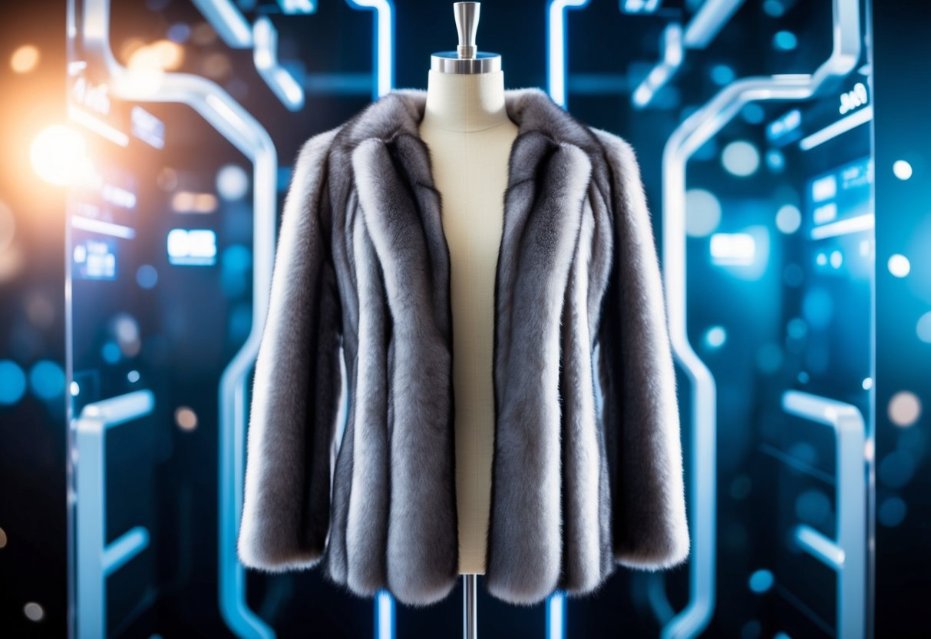
Faux fur has come a long way thanks to new technologies. Better materials and methods now create fake fur that looks and feels more like the real thing. These changes make faux fur a good choice for many products.
Innovations in Synthetic Fibers
New synthetic fibers have made faux fur much better. Companies now use special plastics and fabrics to make fake fur softer and more realistic. Some new fibers can even mimic the warmth of real animal fur.
Advanced machines help create faux fur with different lengths and textures. This lets makers copy many animal furs closely. Some faux furs now use recycled materials, which is good for the planet.
Dyes and treatments have also improved. Faux fur can now have rich colors and patterns that look natural. These advances make fake fur harder to tell apart from real fur.
Future of Faux Fur
The future of faux fur looks bright. Scientists are working on plant-based fibers to replace plastic ones. This could make faux fur more eco-friendly.
3D printing might change how we make faux fur. It could create very detailed fake fur quickly. This tech might let people design custom faux fur items easily.
Lab-grown fur is a new idea being explored. It would grow real fur without animals. This could offer a new option between real and fake fur.
Smart textiles might add new features to faux fur. Imagine a coat that changes color or keeps you warm automatically. These ideas could make faux fur even more popular in the future.
Frequently Asked Questions
Faux fur raises many common questions about its production, care, and environmental impact. Here are answers to some top inquiries about this popular fabric alternative.
How is faux fur produced and what materials are used?
Faux fur is made from synthetic fibers like polyester, acrylic, and modacrylic. Machines weave these fibers into a backing material to create the furry texture. The fibers are often treated with dyes and finishes to mimic real animal fur colors and textures.
Manufacturers can adjust the length, thickness, and color of the fibers. This allows them to copy many types of animal furs.
Are there any health risks associated with wearing faux fur?
Faux fur is generally safe to wear. Some people may have skin reactions to synthetic fibers or dyes used in faux fur. This is rare but possible.
Faux fur can trap heat and moisture. This may cause discomfort in hot weather. It’s best to wear breathable layers underneath faux fur coats.
What are some common misconceptions about the durability and maintenance of faux fur?
Many think faux fur wears out quickly. But quality faux fur can last for years with good care. It often holds up better than real fur to rain and snow.
Some believe faux fur is hard to clean. In fact, most faux fur items can be machine washed on a gentle cycle. Always check the care label first.
How do faux fur products impact the environment compared to real fur?
Faux fur has both pros and cons for the planet. It doesn’t harm animals. But it’s made from plastics that don’t break down easily.
Real fur uses animal skins and toxic chemicals. Faux fur needs less water to produce. But it sheds microplastics when washed.
In what ways can faux fur be distinguished from real fur?
Look at the backing. Faux fur has a woven fabric base. Real fur has a leather-like skin backing. Faux fur fibers are uniform in length and texture. Real fur varies more.
Burn a small hidden section. Faux fur melts like plastic. Real fur singes and smells like burning hair. Faux fur often feels softer and lighter than real fur.
What are the best practices for caring for and cleaning faux fur items?
Brush faux fur gently to remove dust and tangles. Use a wide-toothed comb or slicker brush. Store items in a cool, dry place. Avoid direct sunlight to prevent fading.
For washing, use cold water and mild detergent. Air dry away from heat. Fluff the fur when dry. Don’t iron faux fur. Steam can help remove wrinkles.
Related Post: Fabric 101: Essential Guide to Textile Types and Care
